A group of prominent exiled Iranian pro-opposition figures have issued a coordinated message predicting 2023 will be a year of “victory” with the regime shaken by protests, AFP reports. The message was sent simultaneously on social media by a variety of figures, ranging from the influential US-based dissident Masih Alinejad (below) to the son of the ousted shah, Reza Pahlavi.
The prospect of a unified opposition coalition is an important step forward, says political scientist Ali Fathollah-Nejadis, author of The Islamic Republic of Iran Four Decades On: The 2017/18 Protests Amid a Triple Crisis. It would grant the millions-strong Iranian diaspora, whose combined net worth is believed to reach roughly $2.5 trillion—placing it as high as the GDPs of Canada or France—a unified and, thus, more effective voice to push the international community to increase pressure on the Islamic Republic and further isolate it as a way to support the revolutionary movement inside Iran, he writes for the Atlantic Council.
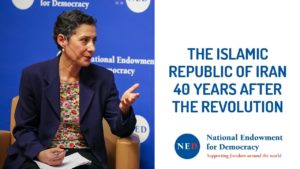 The diaspora must back the movement from the outside and capitalize on worldwide solidarity to compel the regime to reduce state violence so that opposition forces can organize from within, said Ladan Boroumand (right), cofounder and research director of the Abdorrahman Boroumand Foundation for the Promotion of Human Rights and Democracy in Iran.
The diaspora must back the movement from the outside and capitalize on worldwide solidarity to compel the regime to reduce state violence so that opposition forces can organize from within, said Ladan Boroumand (right), cofounder and research director of the Abdorrahman Boroumand Foundation for the Promotion of Human Rights and Democracy in Iran.
Democratic states, for their part, have the power to put pressure on the regime, she told the Institut Montagne. Back in 1997, the Mykonos trial resulted in all EU countries recalling their ambassadors from Tehran. It was this isolation and fear of the regime that had allowed Khatami to become a serious contender for the presidential elections.
The protests have morphed into a fundamental challenge to the regime, but they are still missing the key ingredients – specifically, a unified agenda and leadership – that existed in other successful instances of regime change, says Ilan Berman, senior vice president of the American Foreign Policy Council:
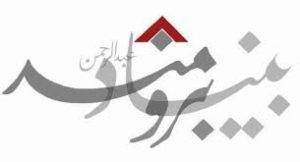 The first thing they need is a positive agenda: “The people in the streets of Tehran and other Iranian cities know very well what they are against, the Islamic Republic. But they haven’t yet articulated what they are for,” Berman notes. “And because they haven’t, they have received far too little attention from the West.
The first thing they need is a positive agenda: “The people in the streets of Tehran and other Iranian cities know very well what they are against, the Islamic Republic. But they haven’t yet articulated what they are for,” Berman notes. “And because they haven’t, they have received far too little attention from the West.- “The second key ingredient is a concerted cadre of leaders. You can’t fight something with nothing and in order for the protests to grow and evolve, they need personalities around which they can coalesce. That is why time is working against the protesters. The longer the situation continues unchanged, the more opportunity the regime has to adapt in order to more effectively quash its opposition.”
Director Ali Abbasi and his cast have used screenings and premieres of a new film as an opportunity to raise awareness for the plight of the Iranian people, NPR reports. At the Cannes Film Festival premiere in May, Holy Spider (above) received a standing ovation, and lead actress Zar Amir Ebrahimi won the festival’s Best Actress award. And in December, the Academy of Motion Pictures Arts and Sciences included Holy Spider on its 2023 shortlist for Best International Feature Film.
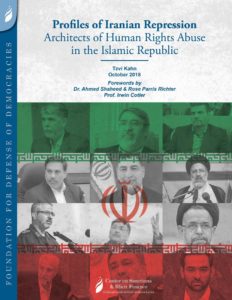 According to The New York Times, in December 2022, oil workers and steelworkers stopped working out of sympathy for the protesters in one of Iran’s biggest general strikes in decades, note Eric Edelman, Senior Adviser at the Foundation for Defense of Democracies, and Ray Takeyh, Hasib J. Sabbagh Senior Fellow for Middle East Studies at the Council on Foreign Relations and the author of The Last Shah: America, Iran, and the Fall of the Pahlavi Dynasty.
According to The New York Times, in December 2022, oil workers and steelworkers stopped working out of sympathy for the protesters in one of Iran’s biggest general strikes in decades, note Eric Edelman, Senior Adviser at the Foundation for Defense of Democracies, and Ray Takeyh, Hasib J. Sabbagh Senior Fellow for Middle East Studies at the Council on Foreign Relations and the author of The Last Shah: America, Iran, and the Fall of the Pahlavi Dynasty.
Washington should make every effort to support these actions and help trade-union activists communicate with one another. U.S. aid to the antiauthoritarian Polish Solidarity movement in the late 1980s helped prompt the collapse of the Soviet Union. A parallel effort in Iran today could help stoke a similar breakdown in the Islamic Republic, they write for Foreign Affairs.
The outrage in Iran about the alleged violent treatment of Amini by the morality police, and the rapid transformation of that outrage into demands by protesters for an end to Islamist rule, appear to have pressured the government into scaling back some morality police activities, VOA adds.
 “Iranian security forces are stretched and their strategy, in Tehran at least, may be to not aggravate the public by detaining one girl walking with no headscarf,” said Roya Boroumand, co-founder of the Boroumand center. “They probably don’t want to be filmed dragging someone unveiled into a van,” Boroumand said. “But the security forces are not necessarily retreating in the face of protesters.”
“Iranian security forces are stretched and their strategy, in Tehran at least, may be to not aggravate the public by detaining one girl walking with no headscarf,” said Roya Boroumand, co-founder of the Boroumand center. “They probably don’t want to be filmed dragging someone unveiled into a van,” Boroumand said. “But the security forces are not necessarily retreating in the face of protesters.”
Fathollah-Nejad, an Iran expert with the American University of Beirut, says the country appears to be engulfed in “a revolutionary process” that started with protests in 2017-18 over economic grievances that quickly turned political, Golnaz Esfandiari reports.
“Any such process inherently involves phases of both relative calm and unrest,” he told RFE/RL. “Crucially, the present revolutionary episode suggests an unbridgeable gulf between the state and society.”
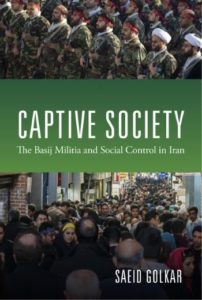 “There is a gap between the state and society,” said Saeid Golkar, Senior Fellow on Iran Policy at The Chicago Council on Global Affairs and the author of Captive Society. “While the regime is anti-American, the [Iranian] society in general is pro-American.”
“There is a gap between the state and society,” said Saeid Golkar, Senior Fellow on Iran Policy at The Chicago Council on Global Affairs and the author of Captive Society. “While the regime is anti-American, the [Iranian] society in general is pro-American.”
It is likely that “further delegitimisation of the regime” could be behind the establishment’s decision to choose “attrition repression instead of the 2019 iron fist strategy,” said Golkar, an Assistant Professor at the University of Tennessee at Chattanooga.
Regardless of the short-term results of the protest movement, it is clear that Iran’s TikTok generation is fed up with the environment of multi-layered hypocrisy that it has grown up in, adds Sara Bazoobandi, a Marie Curie Fellow at the German Institute for Global and Area Studies in Hamburg. This sizeable group (it is estimated that the share of the population under age 39 is around 60 percent) will undoubtedly shape the future of Iran, all while facing violent pushback from a regime of hypocrites, she writes for Carnegie’s SADA bulletin.
A major contender for power in any future scenario is the Islamic Revolutionary Guard Corps, according to Meir Litvak, senior research associate at the Alliance Center for Iranian Studies at Tel Aviv University. The guards are in any case going to play a crucial role in installing the next leader once Khamenei dies. “Think of post-communist Russia: democracy did not stabilize, and former KGB operatives and bureaucrats took over. Communism was gone, but authoritarianism did not disappear,” Litvak says.
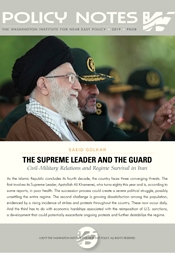 “There is a possibility of a similar situation in Iran. There are hardly any genuine democratic figures – let alone movements – left in Iran today because of regime repression. Reformists who wanted to improve the system have been discredited because their approach failed to produce any results. So, while there may not be a theocratic authoritarian regime, there may emerge a military-nationalist regime, at least in the short run,” he adds.
“There is a possibility of a similar situation in Iran. There are hardly any genuine democratic figures – let alone movements – left in Iran today because of regime repression. Reformists who wanted to improve the system have been discredited because their approach failed to produce any results. So, while there may not be a theocratic authoritarian regime, there may emerge a military-nationalist regime, at least in the short run,” he adds.
Kristin Diwan, senior resident scholar at the Arab Gulf States Institute in Washington, also points to the possible further empowerment of the Revolutionary Guards at the expense of the clerics, especially if nationalism, not theology, ends up becoming the driving force of Iran.
In the past decade, in a bid to become more self-sufficient and mitigate the impact of international sanctions, the Revolutionary Guards has spearheaded key infrastructure projects across various industries. “The IRGC is best positioned to execute the kind of political changes recently seen in neighboring Saudi Arabia: a centralized order with nationalism as the driving ideology,” Diwan says.
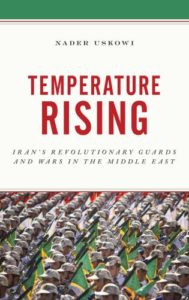 “The Revolutionary Guards has been consolidating control of the Iranian economy while under sanctions. And it is the most likely beneficiary of the generational push to demonize clerics and demand social liberalization. Nationalism may be the glue that holds the country together – and holds off democratic accountability – in a post-ayatollah Iran,” she adds.
“The Revolutionary Guards has been consolidating control of the Iranian economy while under sanctions. And it is the most likely beneficiary of the generational push to demonize clerics and demand social liberalization. Nationalism may be the glue that holds the country together – and holds off democratic accountability – in a post-ayatollah Iran,” she adds.
History had showed that “for popular uprisings to be viable they must attract a critical mass, and in order to attract a critical mass they must be perceived as viable,” said Karim Sadjadpour, a senior fellow at the Washington-based Carnegie Endowment for International Peace.
“It’s clear that many Iranians, given their ongoing dissent, believe this popular uprising could succeed in unseating the Islamic republic,” he added. “It’s also important that Islamic republic officials come to believe that they’re on a losing team. We haven’t reached either of these tipping points yet.”
Washington-based Iran scholar and commentator Alireza Nader agrees that while it is impossible to predict the precise contours of a new political system in Iran, the latest protests have no doubt shown that many Iranians don’t want an Islamist system and would prefer ushering in a secular government.
“I believe that the majority of Iranians want democracy, rule of law and equal rights for women and men, and that there is a revitalized interest in Iranian culture and history,” says Nader.
Thank you @jk_rowling for your continued support of Iranians in our fight against gender apartheid regime. Many people look the other way, but you are an inspiring example of someone willing to stand with us & amplify our voices. Thank you for not abandoning us. #MahsaAmini https://t.co/ZwjtLUrDA8
— Masih Alinejad
(@AlinejadMasih) January 4, 2023







